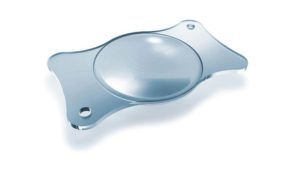Glaucoma
Increased eye pressure in the eldery causing vision loss. 50% of cases are undiagnosed.

Glaucoma is a disease that causes damage to your optic nerve and progressively becomes worse over time. In most cases, the damage is caused through an increased pressure inside the eye.
Glaucoma is more common in the ageing population. In Australia, it is estimated that over 300,000 people have glaucoma, 50% of these are undiagnosed. Glaucoma is the leading cause of irreversible blindness worldwide.
What is eye pressure?
Eye pressure, called intraocular pressure (IOP), is measured in millimetres of mercury (mm Hg). Normal eye pressure ranges from 10-21 mm Hg. Most people with glaucoma have an IOP of greater than 21 mmHg.
What is the cause of increased eye pressure?
Commonly, the cause of Glaucoma is due to the increase pressure in the eye (Intraocular Pressure). This occurs when the fluid (aqueous humour) isn’t being circulated normally at the front of the eye. The eye has a natural drainage system which regulates pressure in the eye. When this drainage system becomes blocked, fluid builds up leading to glaucoma.
Glaucoma often runs in families, but doctors still can’t explain the direct cause of the blockage. Glaucoma generally affects both eyes. However, it can progress differently between the eyes.
What are the symptoms & diagnosis of glaucoma?
Many people don’t realise they have glaucoma as it occurs progressively. The main noticeable symptom of Glaucoma is a loss of peripheral vision and in extreme cases tunnel vision. It is an irreversible but treatable condition, so it is best to diagnose it as early as possible.
The following techniques are used to detect glaucoma:
- Tonometer - Measures the intraocular pressure in your eye. The test is quick, simple and painless.
- Visual Field Test - Testing your visual field lets your doctor know if peripheral vision is being lost. There are several methods of examination available to your doctor.
- Ophthalmoscopy – Allows the Ophthalmologist to look directly through the pupil at the optic nerve to indicate whether or not damage from glaucoma is present.
- Imaging Technology – Newer technology to evaluate the optic nerve and retinal nerve fibre layer, the areas of the eye damaged by glaucoma with OCT optical coherence tomography.
- Gonioscopy – Examines the angle where fluid drains out of the eye and whether the angle is open, narrow, or closed.
What are the types or glaucoma?
Open Angle Glaucoma
Open Angle Glaucoma is the most common type of glaucoma. The damage to the optic nerve progresses slowly and destroys peripheral vision gradually. The drainage angle appears to be open but does not function properly leading to increased pressure in the affected eyes. Typically, there are no symptoms in the early stages of this type of glaucoma.Low Tension Glaucoma
A unique condition in which optic nerve damage and vision loss have occurred, despite a normal pressure inside the eye. This is usually caused from an unusually fragile optic nerve that can be damaged despite a normal pressure inside the eye or because of reduced blood flow to the optic nerve.Secondary Glaucoma
This type of glaucoma usually develops as a result of other disorders of the eye such as an injury, cataracts and eye inflammation. The use of cortisone steroids has a tendency to raise eye pressure and therefore IOP should be checked frequently whilst using these types of medications.Angle-Closure Glaucoma
This is a rarer and very different to open-angle glaucoma as the eye pressure usually rises very quickly as the drainage canals actually get blocked. Symptoms of acute angle-closure glaucoma may include headaches, eye pain, nausea, halos around lights at night, and very blurred vision. A simple test can be used to see if your angle is normal and wide or abnormal and narrow.Congenital (childhood) Glaucoma
This is a rare form of glaucoma which occurs in babies and young children. It is usually diagnosed within the first year of life. It may be an inherited condition, caused by incorrect development of the eye’s drainage system before birth. Parents may note that the child is sensitive to light, has enlarged cloudy eyes and excessive watering. Surgery is usually required.What are the treatment options for glaucoma?
Glaucoma can be treated with eye drops, oral medication, laser surgery, traditional surgery or a combination of these. The goal of any treatment is to prevent loss of vision, as vision loss from glaucoma is irreversible.
Related Articles

How do I know if I have glaucoma?
Glaucoma is the silent sight stealer as it progresses slowly with no symptoms. Learn how you can detect glaucoma earlier to protect your vision.

Top 5 Tips for Cataract Surgery Recovery
A big contributor to cataract surgery recovery can come from how you care for your eyes after surgery. Follow these tips so your recovery goes smoothly.

Your Premium Intraocular Lens Options in Cataract Surgery
When facing Cataract Surgery your choice of Intraocular Lens (IOL) could make a big difference in your vision outcomes. Learn more about your options here.
